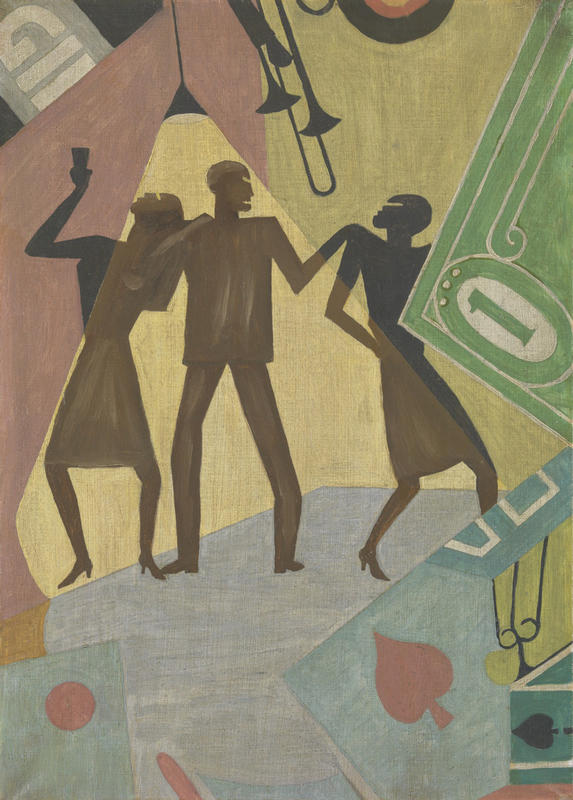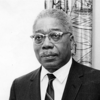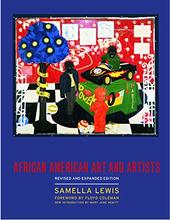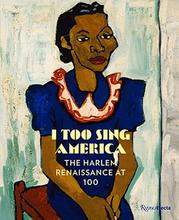More about The Prodigal Son
- All
- Info
- Shop

Contributor
Prodigal Son is the offspring of two Harlem Renaissance giants.
Aaron Douglas is known for his distinctly African American modernism, a style overrun with white bourgeois men. Now, I don’t know about you, but I think modernism would be such a bummer if all we had were these white men controlling the narrative. Douglas, during the period of the Harlem Renaissance, sought to narrate the experience of black lives through the culture of folk art and the black church. Additionally, Douglas had a fervent interest in imagery being illustrative of text. Thus, we have the second best crossover event in history (the first being "Marvel’s Infinity War," of course). Douglas created visuals for James Weldon Johnson’s "God’s Trombones: Seven Negro Sermons in Verse" from 1927. Prodigal Son is one such image from this collection. You can even see the eponymous trombone of God in this painting. Nifty!
Douglas moved to Harlem in 1925 from Kansas, and in Harlem he positively bloomed with creative energy. He collaborated with the likes of Claude McKay and Langston Hughes on illustrations for their written words. James Weldon Johnson’s "God’s Trombones" is a collection of interpretations of popular folk sermons, and with Douglas so interested in the visibility of book illustration, they were a match made in Harlem.
Through illustrations for books and poetry, murals, and various other projects, Aaron Douglas achieved a unique form of modernism that deviated from artistic traditions. Prodigal Son features Douglas’ signature silhouetted forms that recall ancient Egyptian art, and flat colors and dynamic angles that recall the vibrancy of black city life. Harlem at this time was a hub for black creatives and intellectuals, despite the financial kerfuffle we call the Great Depression.
So, black church culture + modernism = Aaron Douglas’ Prodigal Son, to put it simply. This man knew how to create art that spoke to the masses and achieved a high level of artistry in a style that was uniquely his own.
Sources
- Earle, Susan. “Harlem, Modernism, and Beyond: Aaron Douglas and His Role in Art/History.” In Aaron Douglas: African American Modernist, edited by Susan Earle, 5-51. New Haven: Yale University Press, 2007.
- Johnson, James Weldon. “God’s Trombones: Seven Negro Sermons in Verse.” Documenting the American South, University of North Carolina at Chapel Hill. Last modified July 20, 2006. Accessed June 29, 2019. https://docsouth.unc.edu/southlit/johnson/johnson.h
- Mooney, Amy M. “Illustrating the Word.” In The Walter O. Evans Collection of African American Art, edited by Andrea D. Barnwell, 43-53. Seattle: Walter O. Evans Foundation for Art and Literature, 1999.
- Virginia Museum of Fine Arts. “The Prodigal Son (Primary Title).” Accessed June 29, 2019. https://www.vmfa.museum/piction/6027262-7990854/.













